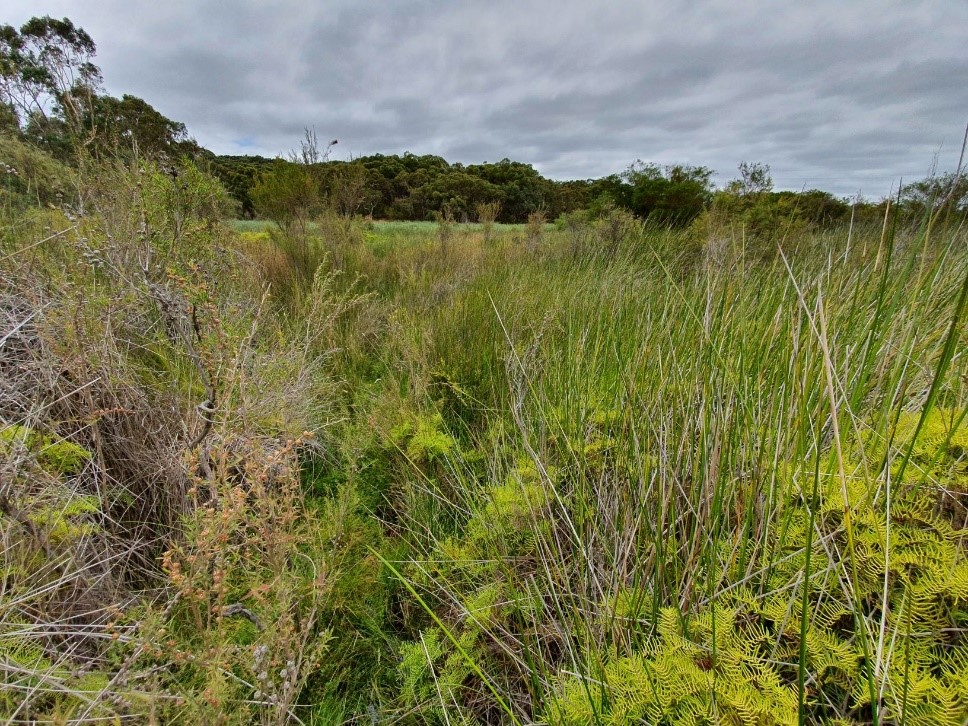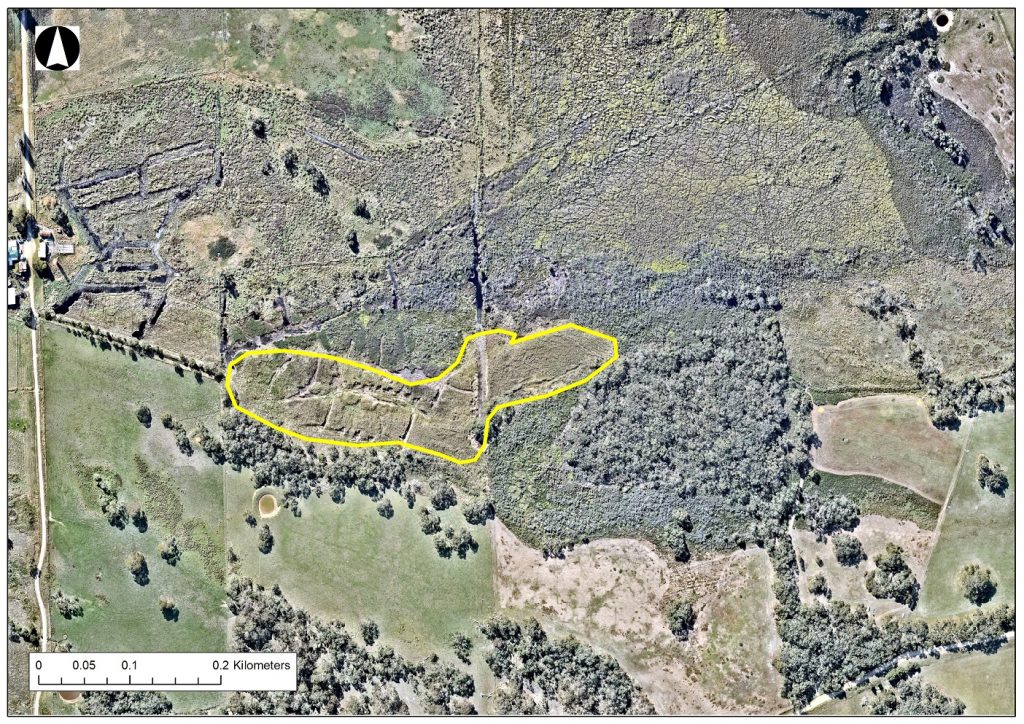Tackling Common Reed infestation of a Fleurieu Peninsula Swamp at Yundi Nature Conservancy
The invasion and displacement of more diverse wetland vegetation by Phragmites australis (common reed) is an issue affecting many Fleurieu Peninsula Swamps, including some of the most intact examples such as Glenshera Swamp.
Phragmites is a native wetland plant with a cosmopolitan distribution (native to many countries the world over), that forms valuable habitat in many areas but is also an aggressive coloniser and can also become highly problematic in certain situations. The species can form a dense monoculture that displaces other plant species, reducing both plant and animal diversity.
Phragmites overabundance can reflect an imbalance in the ecosystem. It may be that the nutrient enrichment of waterways from upstream agriculture, combined with sedimentation from upstream erosion, favour the proliferation of Phragmites. The species is also an ecological engineer, actively changing its immediate environment into a state more favourable to itself. It does this by building up a large below ground biomass of roots and rhizomes which, combined with the accumulation of leaf litter and “thatch” of dead stems, gradually raises the surface of the ground in which it grows. In a wetland context that means progressively drier conditions, which suit Phragmites as it is naturally a species of the outer, drier swamp margins.
Yundi Nature Conservancy is a small (13 ha) property near Yundi with a small (2.3 ha) but significant area of Fleurieu Peninsula Swamp vegetation (see image below) that is protected under Heritage Agreement. The significance of the site relates to the excellent condition of the swamp vegetation, a number of threatened species that occur within it, the ecotone it forms with adjoining, intact woodland vegetation and the commitment and enthusiasm of its owner, John Fargher. John’s place is becoming something of a hub for those seeking ideas, inspiration and understanding of these unique and critically endangered swamp ecosystems. Recent visitors have included Traditional Owners through Walking on Country events that are helping to reconnect people to country.

Despite its important remnant values, the Fleurieu Peninsula Swamp vegetation at Yundi Nature Conservancy is also affected by a Phragmites infestation. The lowest elevations of the property comprise a watercourse that is one of the headwater streams of the Finniss River. Historically it is likely that this watercourse was a much larger Fleurieu Peninsula Swamp extending both upstream and downstream of the property, broad and relatively flat with slow, shallow flows.
Agricultural development has mostly eliminated the FPS vegetation on surrounding properties and drains have been cut below natural surface to accelerate runoff, dry the wet flats and establish pastures. An old constructed drain passes through the lowest ground on Yundi Nature Conservancy and it is in the vicinity of this drain that a Phragmites infestation has taken hold. John is endeavouring to eliminate the Phragmites and facilitate the natural regeneration of FPS vegetation in its place, possibly supplemented with revegetation. To that end, Yundi Nature Conservancy were recently awarded a grant through Revitalising Private Conservation in South Australia: Heritage Agreement Small Grants 2020-2021.
The Phragmites infestation is being tackled using a number of approaches:
- A prescribed burn on 22nd May, with help from the local CFS, removed a considerable proportion of the above-ground biomass of Phragmites (see image below).
- A small excavator with a mechanical mulcher undertook further removal of above-ground, unburnt material on 22nd June (see image below). The mulcher also removed above ground Phragmites material from an adjoining area of the infestation that was not burned in May to provide an experimental comparison of mulching vs mulching+burning.
- The next stage is to backfill the old agricultural drain, now more clearly revealed following Phragmites burning and mulching. This will help keep the swamp wetter for longer during the drier months of the year and is anticipated to help native Fleurieu Peninsula Swamp (FPS) vegetation gain an advantage over Phragmites. It is this stage of the project that NGT are providing assistance with.
Following the above steps (and the conclusion of the grant-funded project), John will continue to monitor the vegetation of the wetland and use various control techniques to remove Phragmites over the coming years. This is likely to involve ongoing slashing but may also require herbicide application. A careful approach is required because various native plants are already emerging from within the former infestation, so control methods will need to be highly targeted.


Taking on a Phragmites infestation is not for the faint-hearted, and ongoing work will be required for several years. However, if the Yundi Nature Conservancy project can show it is possible to convert Phragmites back to diverse Fleurieu Peninsula Swamp vegetation, there are significant implications for FPS across their entire range. As mentioned above, even some of the best and most intact FPS are threatened by Phragmites (see map below), so developing tools to effectively manage this threat could trigger a new wave of restoration and lead to improved prospects for this ecological community and the diverse flora and fauna it supports.

